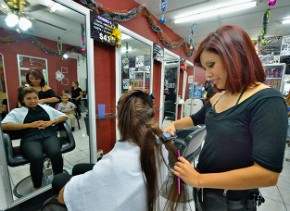Truce: Churches engage with gangs in El Salvador

When I told the taxi driver that I wanted to go to San Salvador’s Mejicanos neighborhood, he told me no. It was simply too dangerous. My pleas got me nowhere, so I called a contact at the Catholic church where I was headed. I put him on the phone with the taxista, and after a long conversation the driver finally agreed. He’d been told exactly which route to take. If we were stopped along the way, we were to say we were going to St. Francis of Assisi Church, which is considered neutral territory in a landscape bloodied by ruthless gangs and those who pursue them.
Neutral territory is hard to find these days in any discussion of Central American gangs, which got their start when young people who had fled the regions’ wars returned from the United States, bringing with them an identity and culture they’d formed as protection against other gangs in U.S. cities like Los Angeles. Mixed with a postwar economy that failed to ameliorate poverty, along with an abundance of leftover weapons and shifting patterns in drug traffic northward, within a decade the gangs in El Salvador helped boost levels of violence back to what they were during the civil war. Gang members from the two dominant groups—the MS-13 and Barrio 18—fought each other for control over territories where they forced transport companies and businesses to pay “the rent” or suffer the consequences.
While the gangs weren’t the only violent actors, with their stigmatizing tattoos they were the most visible, and they quickly became scapegoats for a long list of social evils. With U.S. funding, governments in the region’s Northern Triangle—Honduras, El Salvador, Guatemala—instituted a military response of violent repression and mass imprisonment. Merely looking like a gang member—what authorities called illicit association—was enough to earn young men long sentences in overcrowded prisons plagued by suspicious fires that killed hundreds.




